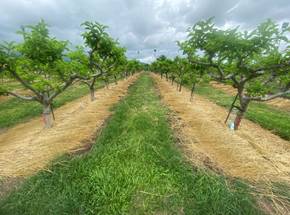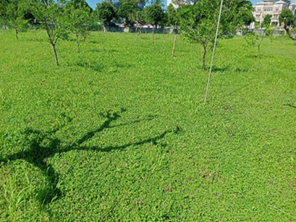"Major Assignments"
- The soil and fertilizer lab is in charge of the following affairs and research:
- Research on green manure crops influence the soil of Taitung’s rice paddies and rice yield.
- Study on the influence that inoculation of mycorrhizal fungi and the application of soil-ameliorating materials make on the quality of annona fruits.
- Apply soil tests and different fertilizers utilization of annona fruits.
- Discuss the application of the testing technology of soil nutrients and fertilization management of annona fruits.
- Look into the application of specific site nutrient management to annona fruits and rice in Taitung.
- Set up the agricultural information system of safety products management for the Taitung region.
- Organize the seminars on rational fertilization to reduce the usage of chemical fertilizers.
"Services"
Soil and plant nutrient analysis:
Making an analysis of soil and plant nutrients is the best way to make fertilizers completely absorbed by crops, reduce the costs of growing crops and prevent the environmental pollution due to overusing fertilizers. First is to examine the amount of soil nutrition and then to make a fertilizing plan based on the categories of crops. In addition, during the period of growth, a diagnosis of plant nutrients will be processed at a proper time; with this, the necessary nutrients can accordingly be provided for crops so as to increase the yield and quality of them. The steps of soil and plant nutrient analysis are 1. The application of soil and plant samples, 2. The treatment and analysis of soil and plant samples, 3. Complete the advice of fertilization management after analyzing soil and plants, 4. Deliver the analysis result and advice of fertilization management, 5. Announce the analysis result and advice of fertilization management on the website of TTDARES soil fertilizer lab. The tools used to gather the soil samples are hoes and shovels. According to the size of the field, each soil sample is taken by 8-12 soil cores. Soil cores are collected from the surface soil of different depths (0-20 and 20-40 centimeters) and then put them in different containers. Soil put in in the container should be mixed well and 1 kg mixed soil after giving the important information (soil depth, name, telephone number, and address) will be delivered to TTDARES for analyzing.
>> Soil and Plant Nutrient Analysis Procedures of Taitung District Agricultural Research and Extension Station jpg
Use of Rice Straw in Sugar Apple Orchards in Taitung
Instead of manually baling rice straw, a small baler is attached to the back of a tractor. As the tractor moves forward, the baler picks up the straw and packs it into bales of about 50 cm in diameter. Each hectare of field produces about 300 such bales, each bale weighing about 20 kg, which is easily handled by one person. The straw can be used as a groundcover in sugar apple orchards to reduce the need for herbicides while adding to the amount of carbon in the soil, making it perfect for ecofarming.
 |
 |
|
A small baler is used to pick up rice straw, which can then be used in sugar apple orchards to cover the ground. |
Rice straw covering the ground in a sugar apple orchard. |
Major Potential for Use of Straggler Daisies as Groundcover in Agriculture
The straggler daisy, (Calyptocarpus vialis, in the Compositae family) is a self-seeding creeper that grows quickly and is shade tolerant. The TTDARES has established a seed-production method that always generates a certain number of seeds. Based on long-term observations and experimentation, we have high expectations for its developmental potential as a groundcover in various environments.
 |
 |
|
The TTDARES has established a seed-production method and expects straggler daisies to become another groundcover choice for farmers in the future. |
Straggler daisies in an orchard not only beautify but also reduce the need to mow weeds, thus reducing labor costs. |





